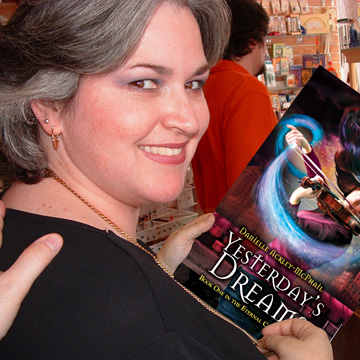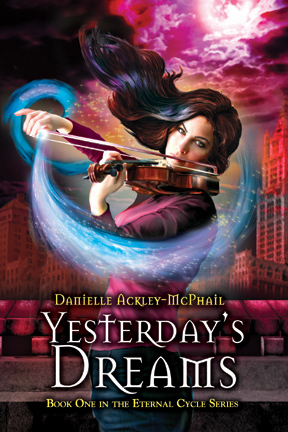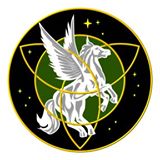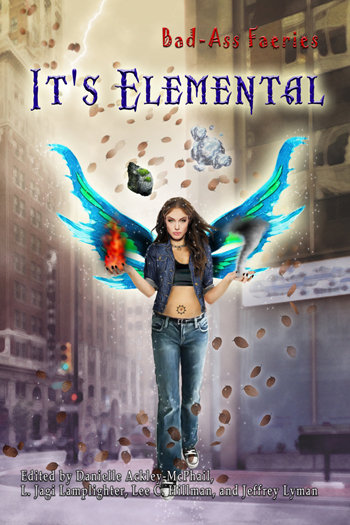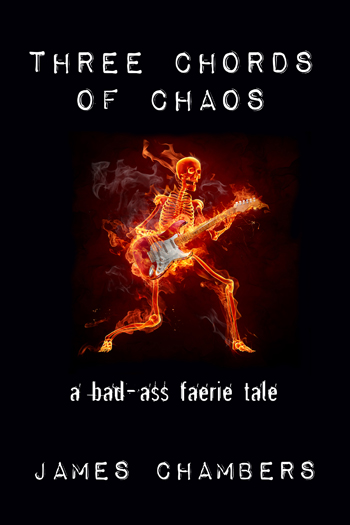Continuing my in-depth interview with author and editor Danielle Ackley-McPhail, this week we dig into some of my favorite writing topics–the alchemy of breathing life into fictional characters and how much of the real world underlies our fantasy tales. (Read the first part of this interview.)
Carman and her three sons, Calma, Dubh, and Oclas, are Athenians who attempted to invade Ireland. How did you discover that myth? Is there a connection between that story in Celtic mythology and anything in Greek mythology?
This is one of those happy accidents. See, as many already know, I occasionally use the Morality Play method of naming characters, but nothing so obvious as using Mercy, Hope, or Charity type names. If I am writing in a particular cultural heritage I like to use that language. Not for every character, but for specific ones. In the case of Yesterday’s Dreams I wanted to name my antagonist “Evil” so I picked up my Irish/English dictionary and found there were about five or six different words for “Evil”. Of those words I felt “Olcas” was the one that most resembled a name. Choice made, I fleshed things out a bit and then went and did some random reading in The Dictionary of Irish Mythology, trolling for things I could add to my story. I was very surprised to discover that there actually was a character in the legends called Olcas (at least in the version I first found. There are a couple of variations of the sons’ names, as I discovered in later research). When I made my initial discovery it solidified the story I was going to tell. It was also the point where my single novel became a trilogy. Why? Well…my simple story had gotten infinitely more complex. I was a beginner, after all. It would have been very confusing to have four major bad guys in the one novel. I chose, instead, to introduce one brother in each book, building up to the climax of the series.
Another variation I discovered in my research is that sometimes Carman was called an Athenian goddess, and other times she was called the goddess of black magic. Because it was never my intention for her to come onto the page in primary action I didn’t research too much further into Carman specifically. I also have to be honest that I never thought to see if there was a corresponding presence in Greek mythology…hmmm…very curious. I think I’ll have to go look now…Nope, a casual search did not turn up anything.
 Continuing that theme, tell us about the name of Dubh, second of Carman’s sons to enter the story, which means “black,” and the name of her third son, Calma, which, oddly for a villain, means “valiant.”
Continuing that theme, tell us about the name of Dubh, second of Carman’s sons to enter the story, which means “black,” and the name of her third son, Calma, which, oddly for a villain, means “valiant.”
The legend of Carman and her three sons have variations depending on the source where you find the reference. I first came across them in The Dictionary of Irish Mythology and there were only about two or three lines explaining the context and giving the relevant names and their meanings. Since this is the first reference I discovered I used those names, though I admit Calma didn’t make much sense to me either. If I had to theorize, though, I would think it might have a connotation related to false honor or chivalry where the appearance of being honorable is more important than actually being honorable. Just a theory, though. I discovered different names for the sons, eventually, but that wasn’t until after the second book was done and the characters were already firmly seated in my mind under the original names.
Calma, Dubh, and Oclas don’t especially respect or like one another, but they’re dependent upon each other for their existence and bound together by their family connection. This proves both a strength and a weakness for them. Had you planned that for them from the start or did it evolve as you developed the characters?
Most of what I wrote in this series was inspiration. The characters really took it on themselves to define their personalities as I wrote. In very few instances did I project my own perception on them and often when I tried they fought back and went in completely different directions. With the three brothers I mostly thought of the most dark, despicable personality traits I could and took cues from how they manifested themselves. In part this was influenced by their names. In part by events that unfolded in the book. At the beginning Lucien Blank, the first victim inhabited, read very flat and one-dimensionally evil so I compensated by contrasting that with the more layered, if still focused evil that was Olcas. In Tomorrow’s Memories, Dubh became the epitome of his name so I kept him very dark and sadistic. Calma, the last to appear, remained focused and organized and the most calculating of the three.
Some of the elements in Yesterday’s Dreams—coping with cancer, the cost of health care, facing foreclosure—resonate with timely real-world issues. An intentional as a way of contrasting the modern world with the world of myth? Or only a happy accident?
You know, it’s kind of strange. I really can’t say why I made the choices I did…the cancer part, anyway. I was looking for a strong motivator. A valid reason for Kara’s actions when she gives up the violin; see, the scene in the pawnshop was where things all started when I first wrote this. I knew what happened, I just hadn’t found the why. Once this turned into a novel cancer seemed appropriate. The rest just trailed from there in a logical progression.
The irony? After I wrote the book elements of my life started to echo the novel. I moved into a house that in many ways matched the description of Kara’s house, right down to the tree stump on the block and the bodega on the corner. Unfortunately, my mother was also diagnosed with cancer. (She has been free and clear for over ten years.) Sadly, I did not end up with a magic violin or an amusing sprite for a companion.
Protagonist, Kara O’Keefe, is a talented woman, dedicated to her family, struggling with her creative aspirations, and in possession of power she does not yet fully understand. Is there any of you in Kara? Any of the author in Maggie, the Fae who becomes Kara’s protector and mentor?
As authors, it is not possible to create characters that don’t have any glimmer of yourself in them. Even the dark ones hold the seed of potential we hope we never see realized in ourselves, but the fact that they came from within ourselves means they are touched by who we are, who we want to be, or who we are afraid we could become. That having been said, it is possible to use characters that don’t necessarily come from within us. Those are usually stock characters, part of the background of the story, but not integral to the plot. I often have Kara’s worries and Maggie’s weariness and determination. Patrick’s frustration and Beag Scath’s mischief. Lucien is actually a stock character, but the true villain, Olcas…I am sure I must have the slightest echo of him somewhere inside, if nothing else his raging against powerlessness when working with less-than-optimal resources.
Next Week: Part III, wherein we learn more about Kara O’Keefe as well as Goibhniu, the leader of the Tuatha De Danaan, and the cost of experience and personal growth.
To follow Danielle’s projects, learn more about her, or buy her books, please check out her website and visit her Amazon author page. Also, look for her on the convention circuit where she’s a steadfast con presence up and down the east coast.

